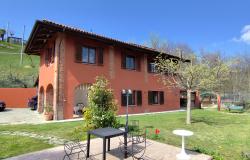Words by Carla Passino
The Italian property market is showing the first signs of recovery. The news comes from two of Italy's most established estate agents groups, Gabetti and Tecnocasa.
Both studies found that prices have started stabilising across the country, even though sale volumes remain a lot lower than in the past. Italy’s metropolitan areas only saw a minimal decline in prices in the first half of 2009 (an average of 0.9%, according to Gabetti, reaching 1.9% in Milan and 1.3% in Rome; an average of 2.7% according to Tecnocasa, reaching 1.7% in Milan and 2.8% in Rome), while the average drop across smaller provincial capitals was a modest 3.6% (according to Gabetti). This is a reduction on the 4% decline recorded at the end of 2008.
“The market is showing a small improvement,” states the Gabetti report. “The reduction in values has slowed down, particularly in large metropolitan areas.”
Decreases are particularly contained in Central Italy (-1% according to Tecnocasa; -3.2% according to Gabetti), which emerges as the most stable and successful market, ahead of the South (-3.5% for Tecnocasa; -3.7% for Gabetti) and North (-3.1% for Tecnocasa; -3.8% for Gabetti). And, in line with what other studies have reported since the start of the credit crunch, top end properties in prime urban locations throughout the country are doing significantly better than homes in city outskirts, where there is a glut of new builds.
While the slowdown in price drops is a good sign, even more encouraging is the widespread increase in property interest that agents recorded since last March. Small-scale investors have returned to the market after it became apparent that property was more solid than finance. As for first time and replacement buyers, they are slowly making their way back, and more are expected to liven up demand in the coming months.
 “The property market is still slow and sale volumes have markedly decreased, but the feeling among agents is that confidence has been growing since the second quarter of 2009, with a renewed interest in property purchases,” states the Tecnocasa report. “Looking at demand, we saw an increase in requests for main residences (both first time and replacement homes), which was stimulated by the decrease in interest rates and property prices, especially in the second quarter of 2009. The trend of investment purchases, which had started in the summer of 2008 due to the instability of financial markets, is also continuing.”
“The property market is still slow and sale volumes have markedly decreased, but the feeling among agents is that confidence has been growing since the second quarter of 2009, with a renewed interest in property purchases,” states the Tecnocasa report. “Looking at demand, we saw an increase in requests for main residences (both first time and replacement homes), which was stimulated by the decrease in interest rates and property prices, especially in the second quarter of 2009. The trend of investment purchases, which had started in the summer of 2008 due to the instability of financial markets, is also continuing.”
That said, buyers remain very prudent and price-sensitive at every rung of the property ladder. “Nearly all prospective buyers look closely at value for money,” states Tecnocasa. Gabetti goes as far as stating that purchasers’ behaviours have changed - they now prefer resale homes that make efficient use of space, and specific locations are becoming less critical. “Buyers increasingly evaluate alternatives within their budget,” states the Gabetti report. As a result, owners often have to offer average discounts of 15% over the asking price in order to clinch the sale.
Looking ahead, both Tecnocasa and Gabetti are cautiously optimistic about the Italian market’s performance, provided that some important factors, such as employment levels, interest rates, and banks’ lending policy don’t deteriorate. “If forecasts of next year’s economic recovery find confirmation,” states Tecnocasa, “we expect to see a slight reduction in prices with a stabilization trend emerging in 2011.”













